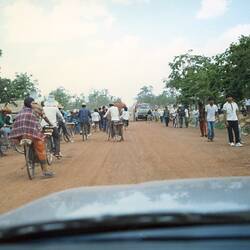Summary
Jennie Roberts worked for the Australian Department of Immigration from 1973 until her retirement in 2007. She was posted as a Senior Migration Officer to Bangkok in Thailand from 1987 to 1989, when Australia had an extensive program for south-east Asian refugee and humanitarian entrants, primarily from Vietnam, Laos and Cambodia. Based in the Visa Office at the Australian Embassy, Jennie and her colleagues frequently travelled to UNHCR refugee camps in Thailand to interview applicants. Most of Jennie's work during her two year posting was associated with the Refugee and Special Humanitarian Programs (RSHP) in Thailand and the Vietnam Family Migration Program (VFMP) in Vietnam. It involved participating in the identification, interviewing and selection of applicants, assessing their claims and determining their eligibility under the Australian Government programs; dealing with documentation, claims, appeals, and liaising with major international organisations.
Jennie Roberts worked for the Department of Immigration (through its many name changes) from 1973 until she retired in 2007 and was based in Canberra. During those years she worked in many different parts of the Department, but was most interested in operational work with an overseas connection. Her longest periods were in temporary entry (dealing with the entry of students and visitors), the area dealing with unauthorised boat arrivals in Australia (from 1990 to 1995), Overseas Operations Branch (dealing with the operations of immigration offices at overseas posts) and Refugee and Humanitarian Branch (dealing with the management of the offshore Refugee and Humanitarian Program (from 2002 to 2007).
Jennie was drawn to the work by the 'international' nature the Department - dealing with people from many parts of the world, and the possibility of working overseas. From February 1987 until April 1989, she was assigned as a Migration Officer in the Australian Embassy in Bangkok, Thailand. Based in the Visa Office of the Australian Embassy, Bangkok, Jennie lived in an apartment in the Sukhumvit area. Staffing in the Visa Office comprised of one Chief Migration Officer, one Senior Migration Officer and five Migration Officers Grade 2. There were 20 locally engaged Thai staff who provided valuable expertise and support to the Australia-based staff. The five migration officers travelled frequently to refugee camps in Thailand to interview and select applicants under the Government's Refugee and Special Humanitarian Programs (RSHP), and to Vietnam to select applicants under the Vietnam Family Migration Program (VFMP).
The RSHP and VFMP were major responsibilities of the Visa Office and were resource intensive due to their complex nature, changing policies and conditions (instigated by the Australian and Thai Governments, international organisations, and the resettlement countries), the travel required and the necessity of setting up a temporary office usually in very basic environments for each interview trip. Staff were rotated through the three main program areas of the Visa Office - migration and temporary entry, RSHP and VFMP and all shared the interview trips to Thai refugee camps and to Vietnam.
For the refugee/humanitarian work Jennie's tasks were to participate in selection and interview trips to various Thai refugee camps, and to Vietnam, to try to identify applicants, their family compositions, assess their claims and determine their eligibility under Government programs. On return to the Visa Office in Bangkok after interview trips staff managed the processing of cases through to rejection or approval; dealt with complications relating to documentation, family composition and medical issues; responded to enquiries, complaints and reviews; liaised with international organisation such as UNHCR, the International Organisation for Migration (IOM) and Thai Government agencies; and monitored and reported on their caseloads.
Jennie found the work to be a busy, demanding, eye-opening experience. At times she felt she could have a positive impact on the welfare of people in refugee situations; at other times she felt overwhelmed and powerless. She was often filled with admiration for the strength refugees showed in coping with their lives, horrified at the exploitation that occurred in refugee situations, frustrated at changes in policy (by all agencies involved), totally dismayed by the destruction of a country and its people by the Khmer Rouge, and saddened by the pervasive depression and poverty witnessed during her first trips to Ho Chi Minh City in 1987.
Jennie's work also required some dealings with counterparts from the USA and Canada. The USA and Canada were the other two of the three main resettlement countries; they also conducted interview trips, and Australian staff had to ensure their trips did not coincide and overburden the camp agencies. Refugees often had applications pending with a number of countries. Senior A-based staff from the Visa Office were in frequent contact with their counterparts in other resettlement countries.
During this period there was a large displaced person population in Thailand and the people were from Laos (comprising both lowland and highland/Hmong Lao), Cambodia and Vietnam. There were some Burmese living in border areas and illegally in towns and in Bangkok, but the Thai Government would not allow these people to be considered for resettlement while generally taking a fairly lenient attitude to most of them. There were also a small number of other nationalities - Iranians, Afghans, and people from Eastern Europe - who were in Thai immigration detention. Some of these people sought refugee entry to Australia. Under Thai Government policy, resettlement countries could only consider those refugees that it permitted to be processed and to whom it was prepared to grant exit permission. This meant that at times migration officers could not process people who would have been eligible under Australian programs. Under Australian Government policy, Australian officials generally only considered refugees who had been accepted and registered by UNCHR and who were living in a UNHCR-sponsored camp.
During the time Jennie was in Thailand she visited four main camps that were available for refugee processing and resettlement. These were: Ban Vinai in northern Thailand, mainly highland/Hmong residents from Laos; Napho in north-eastern Thailand, mainly lowland Lao residents, some Khmer; Khao-I-Dang on Thailand's eastern border, mainly Khmer residents (staff were not able to conduct interviews in the camp itself but worked from former army sheds in a nearby town called Baan Thai Sammart, and the refugees were brought there by bus); Phanat Nikhom, a transit camp about 100 kilometres south-east of Bangkok where Lao, Khmer and Vietnamese refugees accepted for resettlement by various countries came for orientation courses and final medical processing; Vietnamese boat arrivals and Vietnamese from two closed refugee camps were also transferred to this camp, dramatically increasing its population. Getting to Ban Vinai and Napho involved a flight from Bangkok and then a drive. The drive to Khao-I-Dang took about five hours, and the drive to Phanat Nikhom about one hour.
The Australian Government established a Refugee and Humanitarian Program after the political events in Indo-China in 1975 and the subsequent outflow of people throughout South East Asia and to Australia. This took into account international obligations, community needs and requests in Australia, and Australia's capacity for settling refugees and pressures on countries of first asylum in South East Asia. With these factors in mind, the Government set figures for the annual intake of Lao, Khmer and Vietnamese refugees from Thailand. Jennie and her colleagues continually monitored their program to try and meet these outcomes but they found it difficult given the complexity and changing nature of the refugee situation in Thailand with many factors beyond their control. For example, they might be told to stop processing a particular group for a while because the program target was nearing capacity; or they had to be generous in their assessment of another group which was below target. Migration officers like Jennie found themselves in difficult situations as they tried to explain these decisions to applicants and their sponsors.
From 1990 to 1995 Jennie worked in areas of the Department dealing with unauthorised boat arrivals. She was part of many interview teams that went to northern Australia, her role being not to assess refugee eligibility but to try to establish the identity of the arrivals, details of the boat trip and its organisation. In December 1993 she escorted back to Cambodia the first group of Cambodian boat arrivals who, under a Government program, had agreed to return to Cambodia for a year and then be able to migrate. In May 1999 Jennie travelled to Thessaloniki in Greece to escort to Australia the fifth plane load of Kosovar displaced persons who were given temporary asylum, but many subsequently sought and some obtained permanent residency in Australia.
More Information
-
Keywords
-
Authors
-
Article types





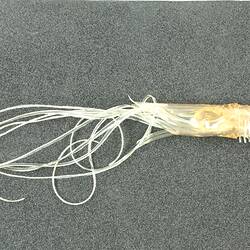
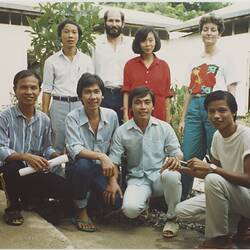
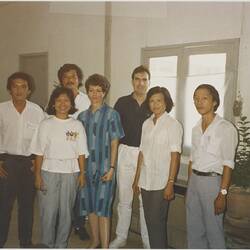




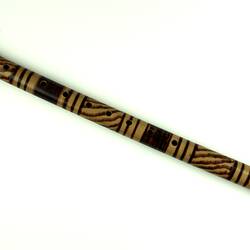


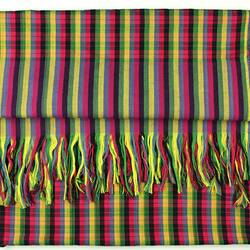
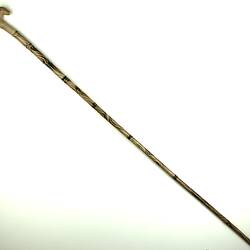

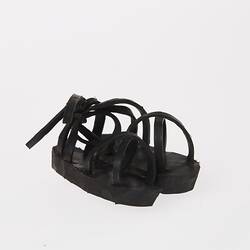
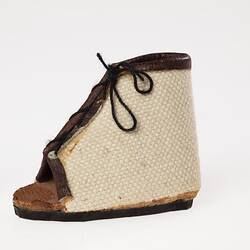

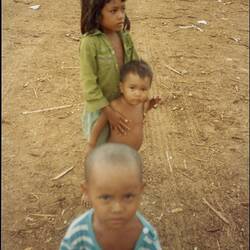

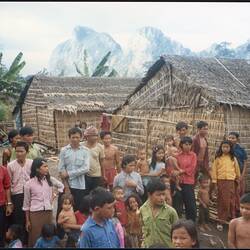
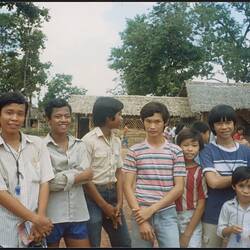

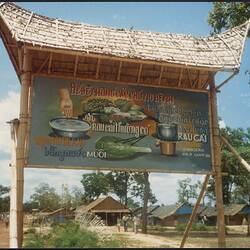
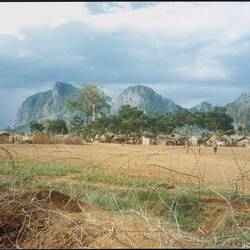
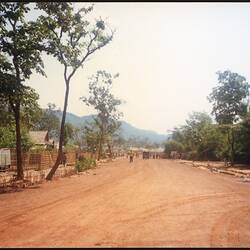

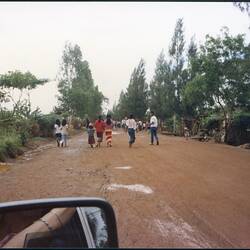
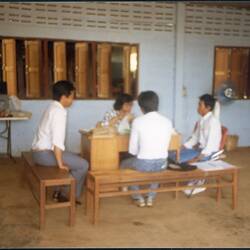
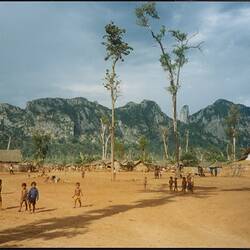
![Digital Image - 'Samlars' [Converted Motorbikes], Aranya Prathet, Thailand, Jun 1988](/content/media/44/601944-thumbnail.jpg)
